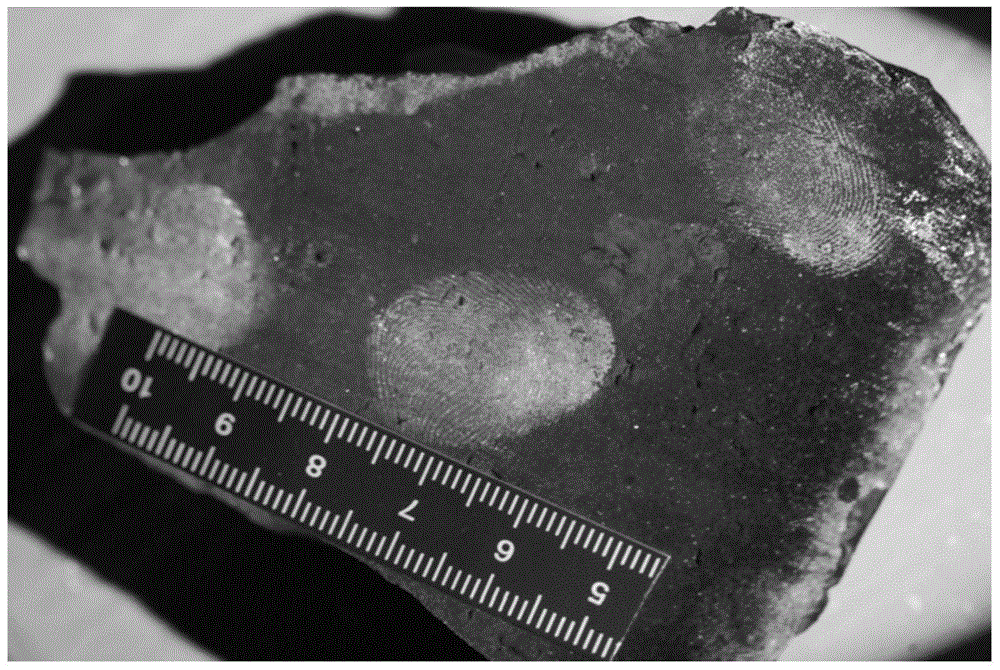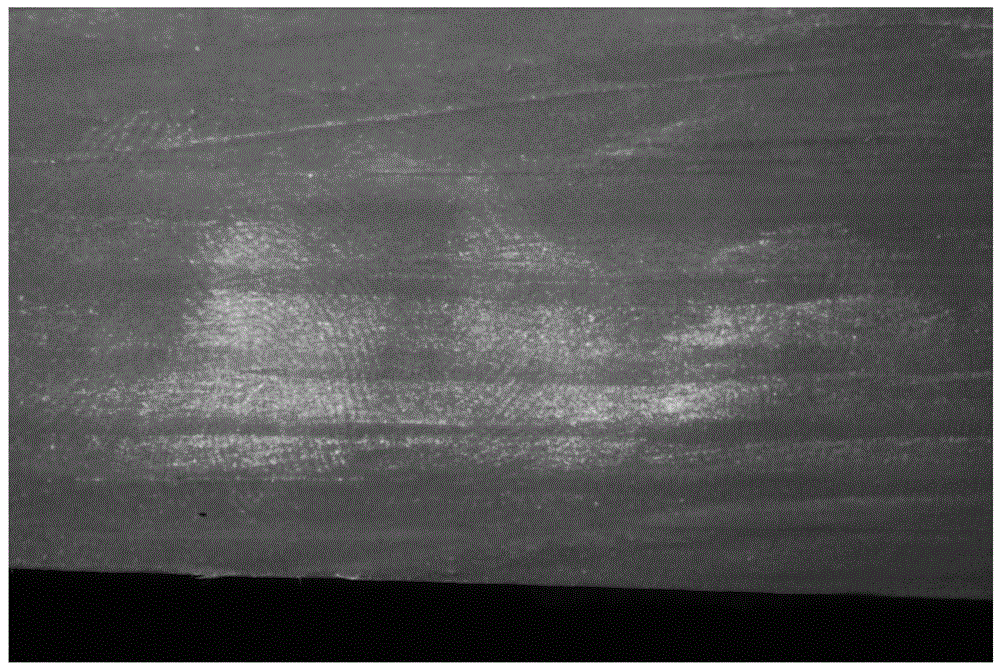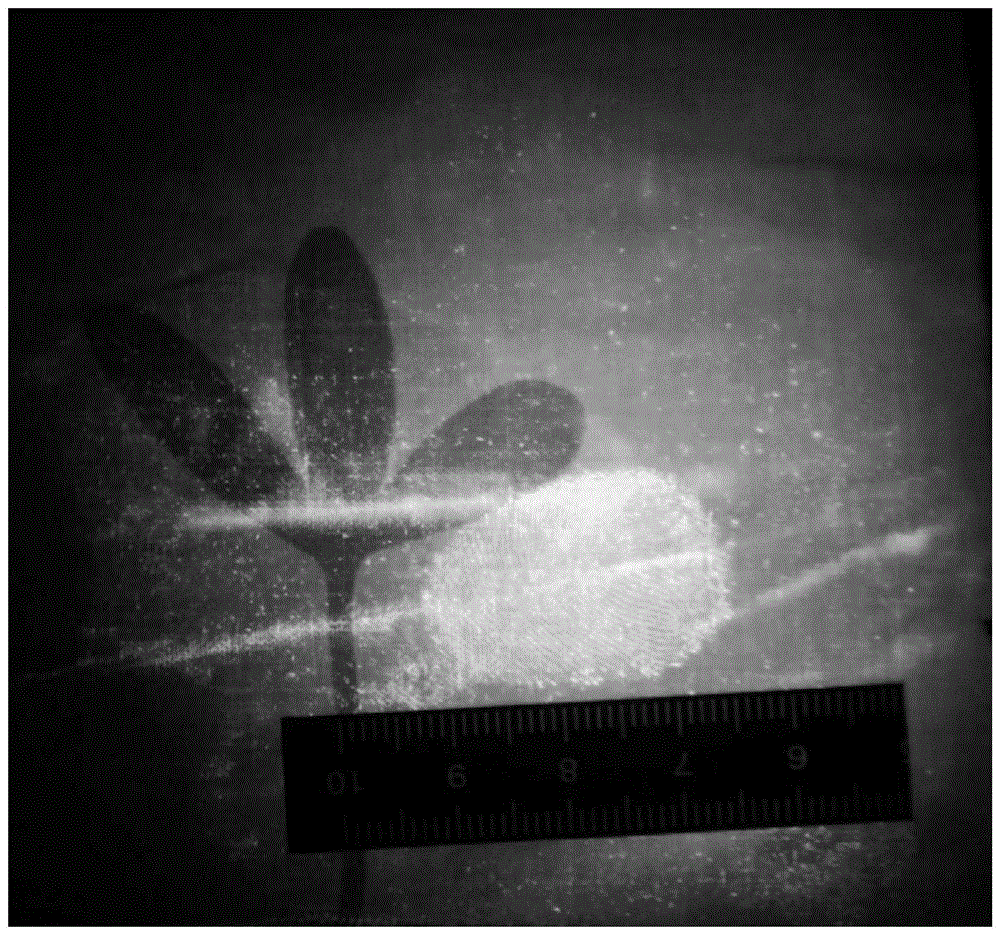A Method for Appearing Fingerprints on Permeable Objects with Rough Surfaces
A permeable, rough surface technology, used in human identification, medical science, sensors, etc., to solve the problem of inability to obtain handprints of bricks, sticks, fabrics, leather, etc.
- Summary
- Abstract
- Description
- Claims
- Application Information
AI Technical Summary
Problems solved by technology
Method used
Image
Examples
Embodiment 1
[0030] Example 1 (the sample is a brick with fingerprints)
[0031] (1) Control the moisture content of bricks to 7% by drying;
[0032] (2) Mix 1.0g glacial acetic acid and 9.0g ethyl acetate thoroughly at 25°C and 60% relative humidity; then add 0.12g indanedione, fully stir to dissolve, then add 89.88g petroleum ether , fully stirred and dissolved, and prepared as a fluorescent agent. The fluorescent agent is prepared and used immediately. If it needs to be stored, it should be stored in a brown light-proof bottle at 4°C and should be used up within 2 weeks;
[0033] (3) Soak the bricks in the fluorescent agent for 10 seconds;
[0034] (4) Dry the soaked bricks at ambient room temperature (25°C) and put them in an environment with a relative humidity of 30% and a temperature of 120°C for 10 minutes;
[0035] (5) Irradiate the dried bricks with a laser with a wavelength of 532 nanometers and a spectral half-maximum width of less than 1 nanometer, and control the surface of...
Embodiment 2
[0036] Example 2 (sample is wood with fingerprints)
[0037] (1) Control the moisture content of wood to 7% by drying;
[0038] (2) Mix 1.0g glacial acetic acid and 9.0g ethyl acetate thoroughly at 25°C and 60% relative humidity; then add 0.15g indanedione, fully stir to dissolve, then add 88.5g petroleum ether , fully stirred and dissolved, and prepared as a fluorescent agent. The fluorescent agent is prepared and used immediately. If it needs to be stored, it should be stored in a brown light-proof bottle at 4°C and should be used up within 2 weeks;
[0039] (3) Soak the wood with fingerprints in the fluorescent agent for 10 seconds;
[0040] (4) Dry the soaked wood at ambient room temperature (25°C) and put it in an environment with a relative humidity of 30% and a temperature of 100°C for 15 minutes;
[0041] (5) Irradiate the dried wood with a laser with a wavelength of 532 nanometers and a spectral half-height width of less than 1 nanometer, and control the surface of ...
Embodiment 3
[0042] Example 3 (the sample is a fabric with fingerprints)
[0043] (1) Control the moisture content of the fabric to 7% by drying;
[0044] (2) Mix 1.0g glacial acetic acid and 9.0g ethyl acetate thoroughly at 25°C and 60% relative humidity; then add 0.1g indanedione, stir well to dissolve, then add 89.9g petroleum ether , fully stirred and dissolved, and prepared as a fluorescent agent. The fluorescent agent is prepared and used immediately. If it needs to be stored, it should be stored in a brown light-proof bottle at 4°C and should be used up within 2 weeks;
[0045] (3) Soak the fabric in the fluorescent agent for 10 seconds;
[0046] (4) Dry the soaked fabric at ambient room temperature (25°C) and put it in an environment with a relative humidity of 30% and a temperature of 80°C for 20 minutes;
[0047] (5) Irradiate the dried fabric with a laser with a wavelength of 532 nanometers and a spectral half-maximum width of less than 1 nanometer, and control the surface of ...
PUM
 Login to View More
Login to View More Abstract
Description
Claims
Application Information
 Login to View More
Login to View More - R&D Engineer
- R&D Manager
- IP Professional
- Industry Leading Data Capabilities
- Powerful AI technology
- Patent DNA Extraction
Browse by: Latest US Patents, China's latest patents, Technical Efficacy Thesaurus, Application Domain, Technology Topic, Popular Technical Reports.
© 2024 PatSnap. All rights reserved.Legal|Privacy policy|Modern Slavery Act Transparency Statement|Sitemap|About US| Contact US: help@patsnap.com










